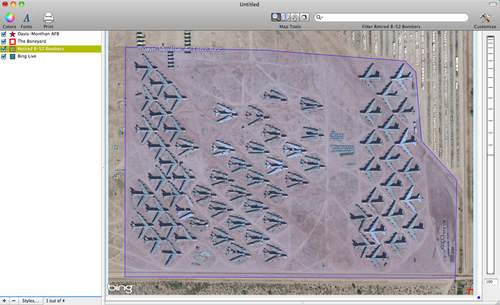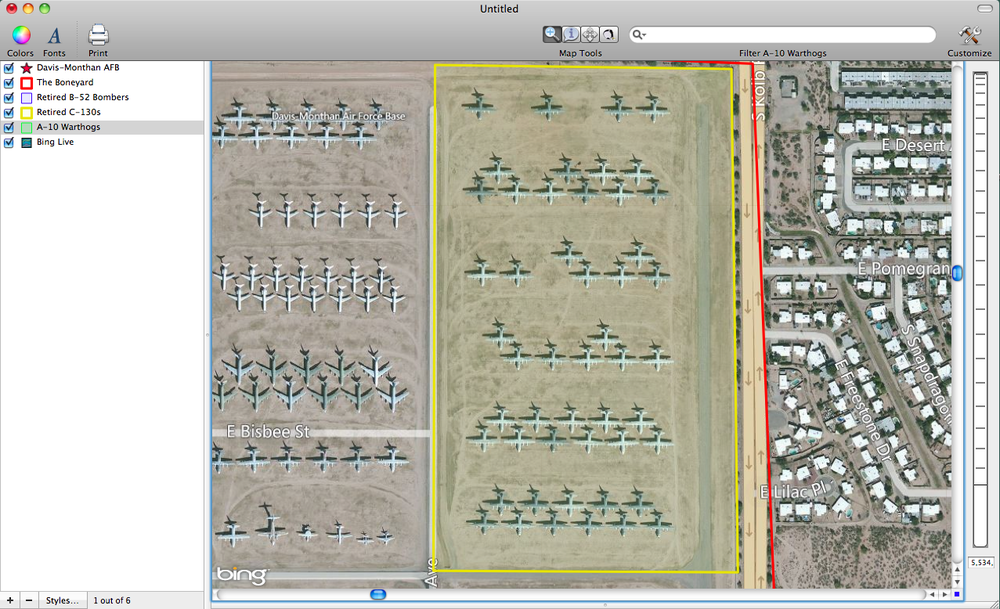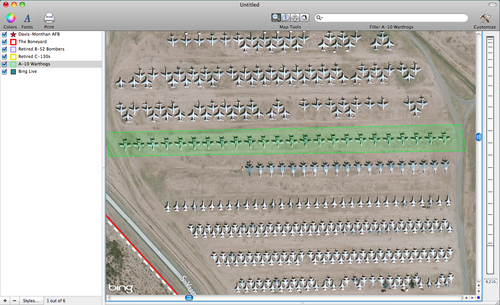- Sat 16 June 2012
- Cartographica
- Rick Jones
- #raster
Usually, our blog posts are all about the business of using Cartographica for analysis or for some other professional application. But, I am here to tell you that Cartographica can be used for exploring, and for viewing some of the most interesting locations on the planet. In a recent CNN article titled "Where Planes go to Die" author Thom Patterson points out some of the best aerospace sights on the planet. In checking out some of Patterson's suggestions I realized that Cartographica really allows you to explore and view interesting places without needing to do much work. Cartographica can be used for fun too!
Patterson's article mentions the 309th Aerospace Maintenance and Regeneration Group based at Davis-Monthan Air Force Base in Tucson, Arizona. The 309th is tasked with maintaining and in some cases regenerating old Air Force planes for future use or for sell to other countries. To maintain the planes they are protected from the harsh desert climate using specially designed paints and other methods for reducing damage to the planes. The Airbase contains more than 4,000 airplanes, which would make it one of the largest air forces on the planet. According to the Air Bases official website for every $1 spent at the airbase the U.S. government recoups $11 that would otherwise be squandered. The airbase has also been made famous for appearing in popular culture. For example, the base was used in the recent Transformers: Revenge of the Fallen movie, and is replicated in the video game Call of Duty: Modern Warfare 2. The airbase actually consists of two separate parts, the air port sections and the boneyard. The boneyard is the storage site for the 4,000+ airplanes. For this post I decided to use Cartographica to explore the Air Force base a little more. See below for some of the amazing aerial images and some features I created of this air base.
The first image below shows the location of the air base within Tucson, AZ.

The next image shows "the Boneyard" which is the storage area for most of the planes. Notice the measurement box that shows the storage area is nearly 500 acres.

The next series of images highlights a few of the planes that I was able to identify. I created polygons using the Edit > Add Feature to create the highlighted areas. The first image below shows some retired B-52 bombers. There are many B-52s on site because of the START I treaty with Russia that was designed to significantly reduce the number of strategic bombers within both country's arsenals.

The Next images shows retired C-130 Cargo planes which are still in service as a main cargo plane for all branches of the U.S. military.

The next image shows a row of A-10 Warthogs which are known as "tank busters". The A-10s are flown by the 355th Fighter Wing which also works to provide air support for the Warthogs. The 355th is stationed at Davis-Monthan AFB.

The final image shows a full view of the Boneyard with the individual sections dedicated to the various types of planes. Note that size of the site and that there are many other types of planes located there. I find the Davis-Monthan Boneyard very fascinating.
